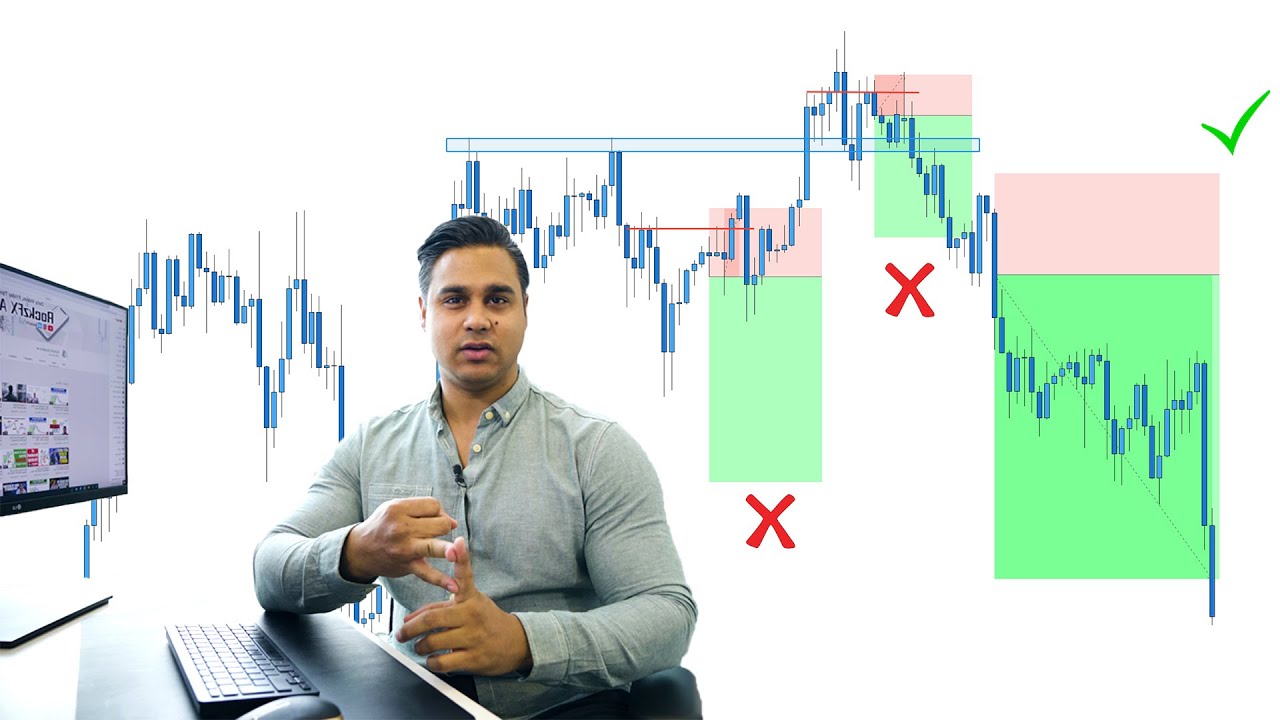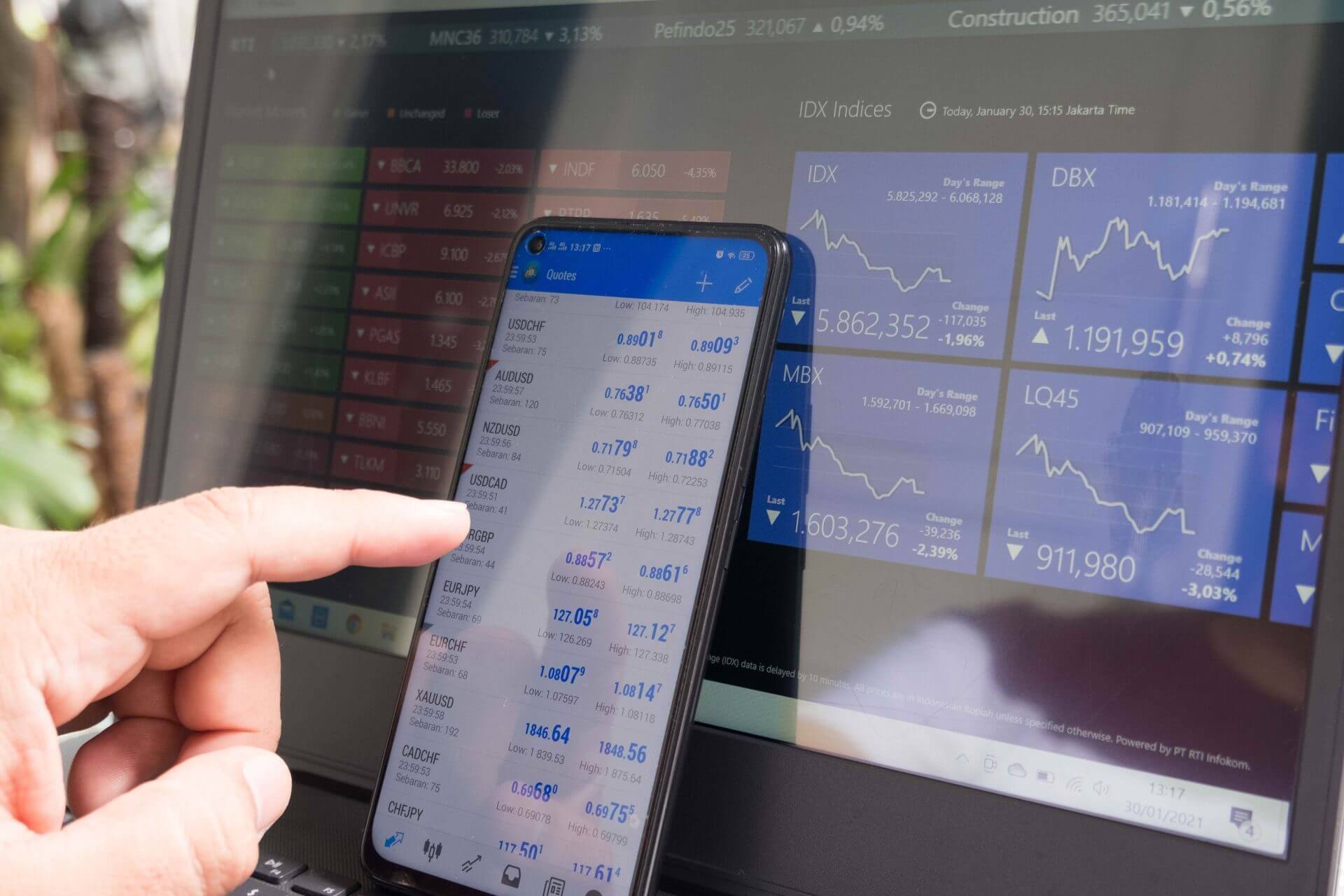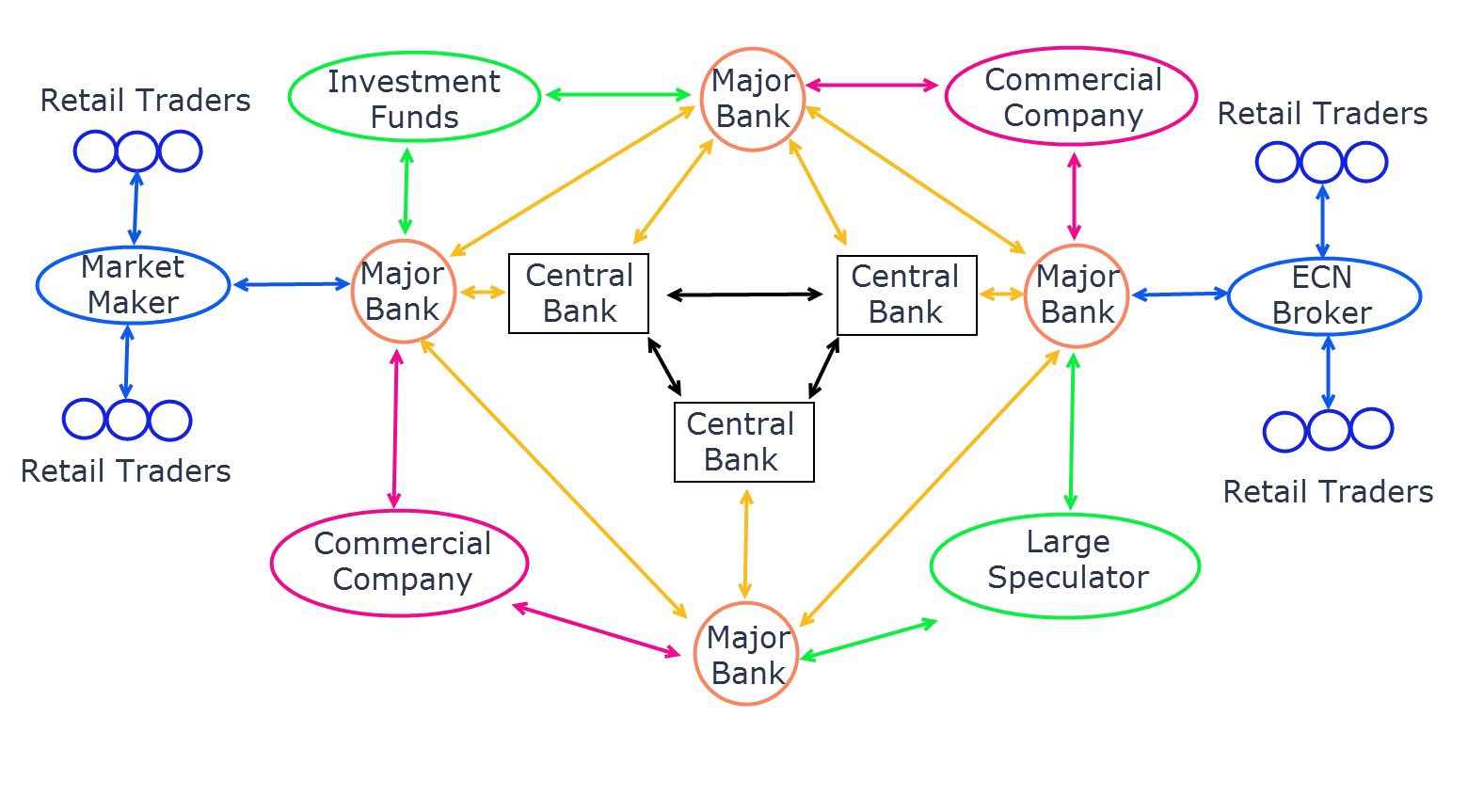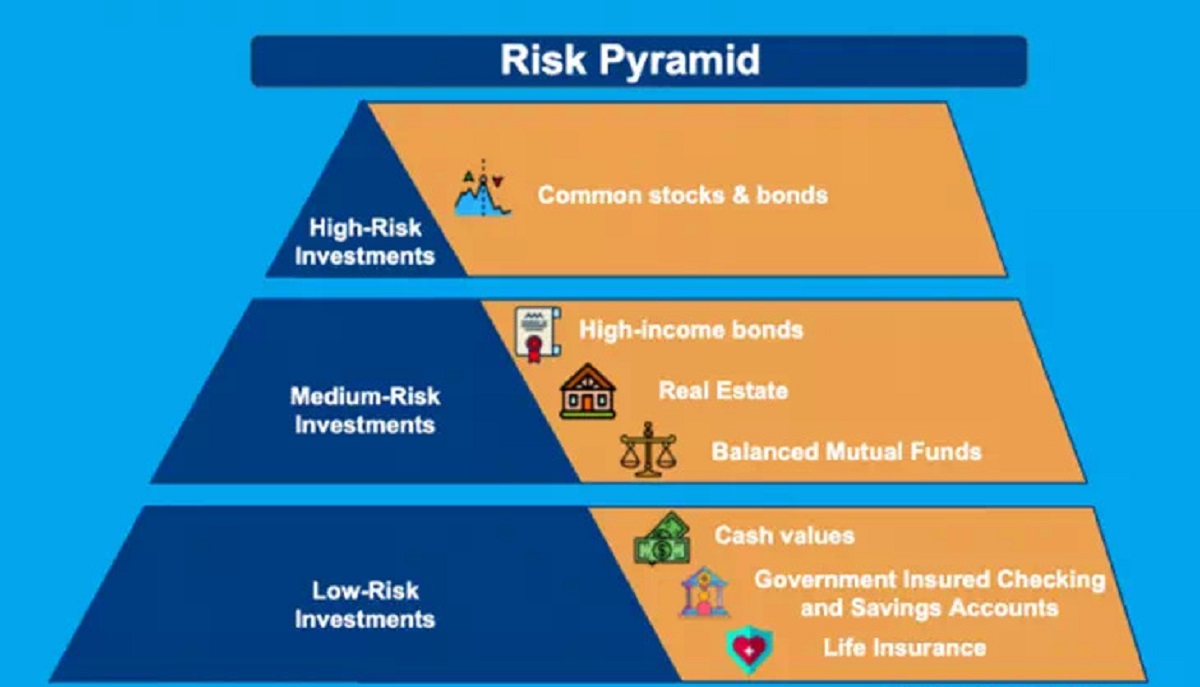Introduction
Welcome to the world of forex trading, where the potential to make money knows no bounds. With trillions of dollars being traded daily, forex offers incredible opportunities for individuals to profit from currency fluctuations. If you are new to forex trading or considering taking the plunge, it’s natural to wonder just how much money you can make in this exciting market.
In this article, we will explore the factors that influence profitability in forex trading, discuss effective trading strategies, delve into the importance of risk management, and highlight real-life case studies of successful forex traders. By the end, you will have a better understanding of the earning potential in forex trading and the steps you can take to maximize your profits.
Forex trading, also known as foreign exchange, involves buying and selling different currencies in an attempt to profit from their price movements. The forex market operates 24 hours a day, five days a week, making it one of the most accessible and liquid markets worldwide. Traders can engage in forex trading through various financial institutions or online platforms.
While the forex market offers substantial profit opportunities, it’s important to note that trading forex also carries risks. Currency prices can be influenced by a wide range of factors, including economic data, geopolitical events, and market sentiment. As a result, the forex market can be highly volatile, with prices fluctuating rapidly.
Profitability in forex trading is not solely dependent on luck. It requires knowledge, skills, and a well-defined strategy. Successful traders understand the importance of analyzing market trends, managing risk effectively, and maintaining discipline in their trading activities.
This article will guide you through the fundamentals of forex trading, providing you with the necessary knowledge to embark on your trading journey. Whether you are a beginner or experienced trader, understanding the potential earnings in forex trading will help you set realistic goals and make informed decisions.
Understanding Forex Trading
Forex trading involves buying one currency while simultaneously selling another. Currencies are always traded in pairs, with the exchange rate representing the value of one currency relative to another. For example, the EUR/USD pair represents the euro’s value relative to the US dollar.
In forex trading, traders aim to profit from the fluctuations in exchange rates. When a trader believes that the value of a currency will rise, they will buy that currency, known as going long. Conversely, if a trader anticipates a currency’s value will decrease, they will sell that currency, known as going short.
One of the unique aspects of forex trading is its decentralized nature. There is no centralized exchange for forex trading; instead, it takes place electronically over-the-counter (OTC). This means that trades can be executed 24 hours a day, allowing traders from around the world to participate at any time.
Forex trading offers several advantages, including high liquidity, low transaction costs, and the ability to profit in both rising and falling markets. Additionally, the forex market provides a wide range of trading opportunities, including major currency pairs, minor currency pairs, and exotic currency pairs.
Major currency pairs, such as EUR/USD, GBP/USD, and USD/JPY, are the most traded pairs and tend to have the most liquidity. Minor currency pairs, also known as cross pairs, involve major currencies excluding the US dollar, such as EUR/GBP or GBP/JPY. Exotic currency pairs involve a major currency and a currency from an emerging or smaller economy, such as USD/ZAR or USD/TRY.
To participate in forex trading, traders typically use a forex broker who provides access to the market and facilitates trades. Brokers offer trading platforms that allow traders to execute trades, access charts and technical analysis tools, and manage their accounts.
Understanding key concepts in forex trading is essential to becoming a successful trader. Traders must learn how to read currency quotes, analyze charts, identify trends, and use fundamental and technical analysis to make informed trading decisions.
By having a solid understanding of how forex trading works and the various elements that impact exchange rates, you will be better equipped to navigate the forex market and maximize your profit potential.
Factors that Influence Profitability in Forex Trading
Profitability in forex trading is influenced by a variety of factors, ranging from economic indicators to market sentiment. Understanding and taking these factors into account can significantly impact your trading decisions and overall profitability. Here are some key factors to consider:
1. Economic Data and News: Economic indicators, such as GDP, inflation rates, and employment data, can greatly impact currency prices. Positive economic data often leads to a strengthening currency, while negative data can lead to a weakening currency. Traders closely monitor economic news releases and adjust their strategies accordingly.
2. Central Bank Policies: Central banks play a crucial role in setting interest rates and implementing monetary policies. Changes in interest rates or monetary policy can have a significant impact on currency values. Traders pay close attention to central bank announcements and statements to gauge future currency movements.
3. Geopolitical Events: Political instability, conflicts, and geopolitical events can create volatility in the forex market. News related to political developments or international relations can cause sharp price movements. Traders should stay informed about global events that can impact currency values.
4. Market Sentiment: Market sentiment refers to the overall attitude and perception of traders towards a particular currency or the market as a whole. Positive sentiment can lead to increased buying, pushing prices higher, while negative sentiment can result in selling pressure and price declines. Traders often analyze market sentiment indicators to gauge market direction.
5. Technical Analysis: Technical analysis involves studying historical price patterns and using indicators to predict future price movements. Traders analyze charts, trends, support and resistance levels, and various technical indicators to identify potential entry and exit points. Technical analysis helps traders make informed trading decisions based on price patterns.
6. Liquidity: Liquidity refers to the ease with which a currency can be bought or sold without causing significant price movements. Highly liquid currencies have tighter spreads and lower trading costs, making it easier for traders to enter and exit positions. Major currency pairs generally have higher liquidity compared to exotic pairs.
7. Risk Appetite: Risk appetite refers to a trader’s willingness to take on risk. Some traders prefer conservative approaches and focus on preserving capital, while others are more aggressive and seek higher returns. Understanding your risk tolerance and adapting your trading strategy accordingly is crucial for long-term profitability.
By considering these influencing factors and staying informed about market developments, you can make more informed trading decisions and improve your profitability in the forex market.
Trading Strategies for Maximizing Profit
Maximizing profit in forex trading requires the use of effective trading strategies. These strategies help traders identify potential trading opportunities, manage risk, and make informed decisions. While there are numerous trading strategies available, here are some commonly used approaches:
1. Trend Trading: Trend trading involves identifying and trading in the direction of a prevailing market trend. Traders look for currency pairs that exhibit clear and sustained price movements, either upward (uptrend) or downward (downtrend). By entering trades in line with the trend, traders aim to capture larger price moves and maximize their profits.
2. Breakout Trading: Breakout trading involves entering trades when price breaks through key levels of support or resistance. Traders monitor currency pairs that are range-bound, with prices moving between established levels. When the price breaks out of this range, it can indicate a potential continuation of the trend. Traders look for breakouts to enter trades in the direction of the breakout.
3. Range Trading: Range trading involves identifying and trading within price ranges. Traders look for currency pairs that repeatedly bounce off established support and resistance levels. They aim to buy at support and sell at resistance, capitalizing on the price oscillations within the range. Range trading is suitable for traders who prefer a more sideways market environment.
4. Scalping: Scalping is a short-term trading strategy where traders aim to make quick profits from small price movements. Traders enter and exit trades within minutes or seconds, capitalizing on small price fluctuations. Scalping requires a high level of focus, quick decision-making, and a reliable trading platform with low transaction costs.
5. Carry Trading: Carry trading involves taking advantage of interest rate differentials between currencies. Traders buy a currency with a higher interest rate and sell a currency with a lower interest rate. By holding the position over time, traders aim to profit from the interest rate differential. Carry trading requires careful consideration of economic conditions and interest rate policies.
6. Fundamental Analysis: Fundamental analysis involves evaluating economic and political factors that can influence currency prices. Traders analyze economic indicators, central bank policies, geopolitical events, and market sentiment to make trading decisions. Fundamental analysis helps traders understand the underlying factors driving currency movements.
7. Technical Analysis: Technical analysis involves studying historical price patterns, chart formations, and various technical indicators to predict future price movements. Traders use technical analysis tools to identify trends, support and resistance levels, and potential entry and exit points. Technical analysis helps traders make informed trading decisions based on price patterns.
It is important to note that no trading strategy guarantees consistent profits. Each strategy has its strengths and weaknesses, and what works for one trader may not work for another. It is essential to practice and refine your chosen strategy, continuously adapt to market conditions, and manage risk effectively to maximize your profit potential.
Risk Management in Forex Trading
Risk management is a crucial aspect of forex trading that is often overlooked by inexperienced traders. Implementing effective risk management strategies is essential for preserving capital, minimizing losses, and maximizing long-term profitability. Here are some key risk management techniques to consider:
1. Determine Risk Tolerance: Before engaging in forex trading, it is important to assess your risk tolerance. Understand how much you are willing to risk on each trade and set a maximum risk level that aligns with your financial goals and comfort level. This will help you avoid taking excessive risks that can lead to significant losses.
2. Position Sizing: Proper position sizing is critical to managing risk. Never risk more than a certain percentage of your trading capital on a single trade. Many experienced traders recommend risking no more than 1-2% of your capital on any given trade. By limiting your position sizes, you can withstand potential losses and avoid blowing up your account.
3. Use Stop-Loss Orders: Implementing stop-loss orders is an essential risk management tool. A stop-loss order is a predetermined price level at which you will exit a trade to limit your losses. Placing stop-loss orders ensures that you have an exit plan in case the market moves against your position.
4. Set Realistic Profit Targets: Setting realistic profit targets helps you manage expectations and avoid chasing unsustainable gains. Determine a target for each trade based on careful analysis and market conditions. Taking profits at predetermined levels helps lock in gains and prevents you from holding onto losing positions in the hope of a future turnaround.
5. Diversify Your Portfolio: Diversifying your trading portfolio across different currency pairs and trading strategies can help spread out the risk. By not relying on a single trade or currency pair, you reduce the impact of any individual trade or market event on your overall portfolio. Diversification can help protect your capital and mitigate potential losses.
6. Stay Informed: Keep up-to-date with market news, economic announcements, and geopolitical events that can impact currency prices. Being informed about potential risks and market conditions allows you to make better-informed trading decisions.
7. Practice Proper Money Management: Money management is the process of managing your trading capital. Avoid over-leveraging by using appropriate position sizes and leveraging ratios. Stick to your risk management rules and resist the temptation to revenge trade or chase losses.
Implementing efficient risk management techniques is crucial for long-term success in forex trading. By managing your risk effectively, you can protect your trading capital, minimize losses during unfavorable market conditions, and maintain a sustainable trading strategy that maximizes your profit potential.
The Importance of Discipline and Patience
Discipline and patience are two essential qualities that every successful forex trader must possess. They play a crucial role in maintaining a consistent and profitable trading approach. Here’s why discipline and patience are so important in forex trading:
1. Stick to Your Trading Plan: Discipline is about adhering to your trading plan, regardless of market conditions or emotional impulses. A well-defined trading plan includes entry and exit strategies, risk management rules, and profit targets. By sticking to your plan, you avoid making impulsive decisions and maintain a structured approach to trading.
2. Avoid Emotional Trading: Emotions can be a trader’s worst enemy. An undisciplined trader may give in to fear, greed, or impatience, leading to irrational and impulsive trades. By practicing discipline, you can avoid emotional trading, make rational decisions based on analysis and strategy, and minimize the impact of emotions on your trading.
3. Patience for the Right Opportunities: Forex trading requires patience in waiting for high-probability trading opportunities. Not every market condition is suitable for trading, and impatience can lead to entering trades that do not meet your criteria. Patience allows you to wait for favorable setups that align with your trading strategy and increase your chances of success.
4. Avoid Overtrading: Overtrading is a common mistake made by undisciplined traders. It refers to excessive trading, entering too many positions, or trading without proper analysis or justification. Overtrading can lead to increased transaction costs, poor decision-making, and impulsive trades. Discipline helps you avoid the temptation of overtrading and focus on quality rather than quantity.
5. Manage Risk Effectively: Disciplined traders prioritize risk management and adhere to strict risk-reward ratios. They have the discipline to set appropriate stop-loss levels and take-profit targets based on their trading plan. By effectively managing risk, you protect your capital and minimize potential losses, ensuring the long-term sustainability of your trading strategy.
6. Learn from Mistakes: Discipline and patience allow you to learn from your trading mistakes and make necessary adjustments. Instead of dwelling on losses or deviating from your plan, disciplined traders evaluate their trades objectively and use the experience to improve their strategies. They make adjustments based on data and analysis rather than impulsive reactions.
7. Maintain Consistency: Consistency is key in forex trading. Discipline and patience enable you to maintain a consistent approach, sticking to your trading plan and strategy over time. Consistency breeds confidence and trust in your abilities, allowing you to better evaluate performance, identify areas for improvement, and make necessary adjustments.
In summary, discipline and patience are essential qualities for successful forex trading. They help you follow your trading plan, avoid emotional decision-making, wait for high-probability setups, manage risk effectively, and learn from mistakes. By cultivating these qualities, you can develop a disciplined trading mindset that enhances your profit potential in the forex market.
Case Studies: Real-life Examples of Forex Traders’ Earnings
Real-life examples of successful forex traders can provide valuable insights into the earnings potential in the forex market. While individual results vary, these case studies demonstrate the possibilities and highlight the importance of skill, strategy, and discipline. Here are a few notable examples:
1. George Soros: George Soros is one of the most successful forex traders in history. In 1992, he famously shorted the British pound, earning an estimated $1 billion in profits during the Black Wednesday crisis. This trade showcased the tremendous profit potential in forex trading and Soros’ ability to identify lucrative opportunities.
2. Bruce Kovner: Bruce Kovner founded Caxton Associates, one of the world’s largest hedge funds. With an initial investment of $3,000, he turned it into $11 billion over several decades. Kovner attributed his success to sound risk management, in-depth analysis, and the ability to remain disciplined during volatile market conditions.
3. Andrew Krieger: Andrew Krieger made a name for himself by shorting the New Zealand dollar (NZD) in 1987. He took a massive short position, estimated to be worth $700 million, and successfully profited from the currency’s sharp decline. Krieger’s trade highlighted the potential earnings that can be achieved with well-timed and strategically executed trades.
4. Bill Lipschutz: Bill Lipschutz, known as the “Sultan of Currencies,” built a fortune trading forex. He turned an initial investment of $12,000 into over $300 million during his time at Salomon Brothers. Lipschutz emphasized the importance of risk management, patience, and the ability to adapt to changing market conditions.
5. Urs Schwarzenbach: Urs Schwarzenbach is a Swiss financier and forex trader who has made significant profits in the currency markets. His trading approach involves using technical analysis and focusing on long-term trends. Schwarzenbach’s success showcases the potential earnings that can be achieved by utilizing a consistent and disciplined trading strategy.
These case studies highlight the earnings potential in forex trading. However, it’s important to note that these successful traders possess extensive experience, in-depth knowledge, and well-honed trading skills. They have also endured failures and overcome challenges along their journey.
It’s essential to approach forex trading with realistic expectations and a dedication to continuous learning and improvement. By studying these successful traders’ experiences, you can gain insights into their strategies, mindset, and risk management techniques, which can help inform your own trading decisions.
Remember, achieving consistent profitability in forex trading requires patience, discipline, and ongoing education. Everyone’s journey is unique, and it’s crucial to develop your own trading style and strategy based on your risk tolerance and financial goals.
Common Mistakes to Avoid in Forex Trading
Forex trading offers ample opportunities for profitability but also comes with its fair share of risks. To increase your chances of success, it’s crucial to avoid common mistakes that can impact your trading performance. Here are some common mistakes to be aware of and avoid:
1. Lack of Proper Education and Research: Jumping into forex trading without acquiring adequate knowledge and understanding of the market is a common mistake. It’s essential to invest time and effort in learning about the forex market, trading strategies, technical and fundamental analysis, and risk management techniques. Researching and educating yourself are crucial steps toward becoming a skilled and successful trader.
2. Emotional Trading: Allowing emotions to influence your trading decisions can be detrimental. Fear and greed often lead to impulsive and irrational trading choices. It’s vital to stick to your trading plan, set realistic goals, and make decisions based on analysis and logic rather than emotions. Emotional discipline is crucial for consistent profitability in forex trading.
3. Overtrading: Overtrading is a common pitfall among novice traders. Taking too many trades, especially without proper analysis and justification, can result in excessive transaction costs and increased risk. It’s important to be selective and focus on high-quality trading opportunities that align with your trading strategy, rather than entering trades simply for the sake of being active in the market.
4. Neglecting Risk Management: Neglecting risk management is a grave mistake that can lead to severe losses. Failing to set appropriate stop-loss levels, not following position sizing rules, and not diversifying your trades can expose you to unnecessary risk. Implementing effective risk management strategies, including setting stop-loss orders, using proper position sizing, and diversifying your trading portfolio, is crucial for capital preservation and long-term profitability.
5. Chasing Losses: Chasing losses is a common psychological trap that can lead to detrimental outcomes. When a trade goes against you, it’s important to accept the loss and move on, rather than attempting to recover by increasing position sizes or taking impulsive trades. Chasing losses can lead to further losses and a downward spiral of poor decision-making.
6. Lack of Discipline and Patience: Discipline and patience are fundamental qualities for successful forex trading. Deviating from your trading plan, impulsive trading decisions, and failure to wait for high-probability setups can undermine your trading performance. Maintaining discipline and patience allows you to stick to your strategy, avoid emotional trading, and make rational decisions based on analysis and rules.
7. Failure to Adapt and Learn: The forex market is constantly evolving, and failure to adapt can limit your potential success. It’s important to stay curious, continually learn, and adapt your trading strategy to changing market conditions. Being open to improving your skills and learning from both successes and failures is vital for growth as a trader.
Avoiding these common mistakes requires self-awareness, discipline, and a commitment to continuous learning. By being proactive in your approach, developing a robust trading plan, and following best practices, you can mitigate risks and increase your chances of long-term profitability and success in forex trading.
Conclusion
Forex trading offers immense potential for individuals to profit from currency fluctuations and build substantial earnings. However, success in forex trading requires more than luck; it demands knowledge, skill, discipline, and a well-defined trading strategy.
In this article, we have explored the various factors that influence profitability in forex trading, including economic data, central bank policies, geopolitical events, and market sentiment. We have discussed the importance of effective trading strategies, risk management, discipline, patience, and continuous learning.
Real-life case studies of successful forex traders have shed light on the earnings potential in the forex market. These examples have highlighted the importance of skill, strategy, and discipline in achieving consistent profitability.
It is important to approach forex trading with realistic expectations and a dedication to continuous improvement. Whether you are a beginner or an experienced trader, it is crucial to invest time in educating yourself, developing a trading plan, practicing effective risk management, and cultivating discipline and patience.
Remember that forex trading carries risks, and it’s important to trade responsibly and never risk more than you can afford to lose. By implementing the strategies and best practices discussed in this article, you can increase your chances of success in forex trading.
So, if you are considering stepping into the world of forex trading, take the time to learn, practice, and refine your skills. Stay disciplined, patient, and adapt with the ever-changing market conditions. By doing so, you can unlock the potential for financial success and a rewarding trading journey in the exciting world of forex.

























